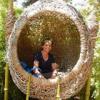Groups joined
Groups
Group
- Latest Discussion
- Apis Nomadica Labs: Mobile Bee-Search for the Future of Food & Medicine
- Latest Resource
- /
- Zimbabwe Shines: 5 Key Takeaways from Ramsar COP15
Making waves in wetland conservation: Explore the outcomes and insights from Ramsar COP15, a premier global event on wetland protection and sustainability
Group
- Latest Discussion
- Online Ocean-Focused GIS Course
This is a chance to participate in a short survey about the preferences that conservation practitioners have for evidence. There's a chance to win one of three £20 Mastercard gift cards.
Group
- Latest Discussion
- Free online tool to analyze wildlife images
- Latest Resource
- /
- AI for Conservation Office Hours: 2025 Review
Read about the advice provided by AI specialists in AI Conservation Office Hours 2025 earlier this year and reflect on how this helped projects so far.
Group
- Latest Discussion
- Apis Nomadica Labs: Mobile Bee-Search for the Future of Food & Medicine
- Latest Resource
- /
- Siguiendo Ballenas: rastreo satelital desde el espacio revela sus rutas migratorias // Tracking right whales from outer space reveals their migratory routes
Un ambicioso proyecto internacional está usando transmisores satelitales para monitorear los viajes migratorios de ballenas francas australes, permitiendo entender sus sorprendentes patrones de desplazamiento en tiempo real. // An ambitious international project is using satellite tags to monitor the migratory journeys of southern right whales, allowing researchers to understand their surprising movement patterns in real time.
Group
- Latest Discussion
- Free online tool to analyze wildlife images
- Latest Resource
- /
- AI for Conservation Office Hours: 2025 Review
Read about the advice provided by AI specialists in AI Conservation Office Hours 2025 earlier this year and reflect on how this helped projects so far.
Group
- Latest Discussion
- New Group Proposal: Systems Builders & PACIM Designers
- Latest Resource
- /
- Population genetics with eDNA
Using SNP markers with an Amphibian species, we were able to identify a total of 17,617 nuclear single nuclear polymorphisms shared across individual, pond eDNA (4 populations) and tank eDNA samples (where tadpoles of the four ponds were housed), enabling us to detect genetic structuring across sampling locations (previously demenstrated with microsatellites and tissue samples), consistent with individual-based estimates. Collecting only the matrix (here water) allows describing the existing population structure...that could be a nice progress for conservation biology...
Bookmarks
My Courses
These are your in-progress and completed courses. Explore more courses through our catalogue.
To find courses you have created, see your "My Draft Content" or "My Content" tabs.








































Abbie Heimowitz's Comments
Be part of the conversation! Once you've joined a discussion in the community, your comments will show up here.